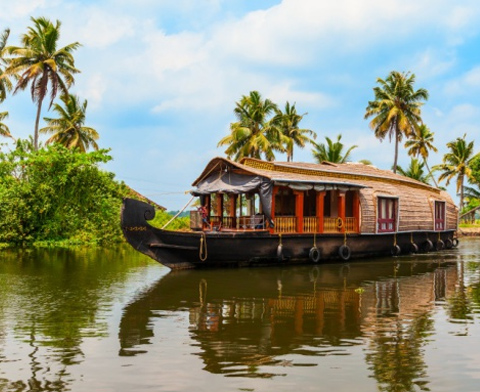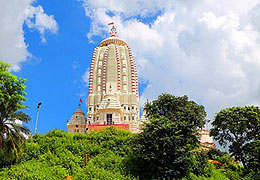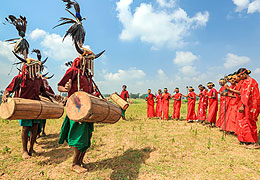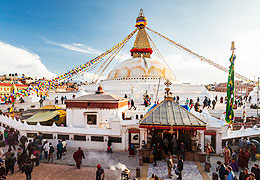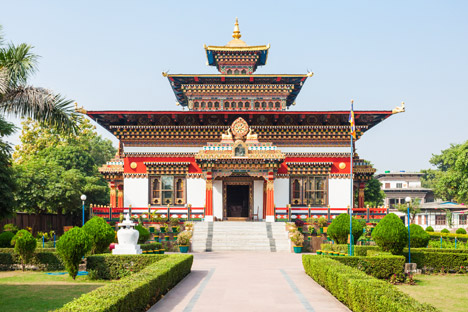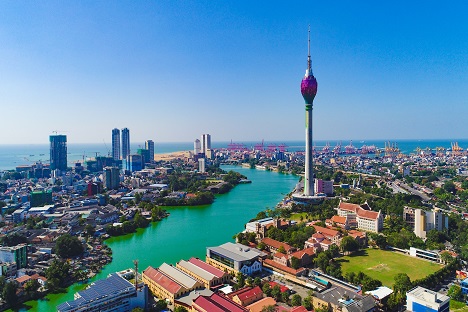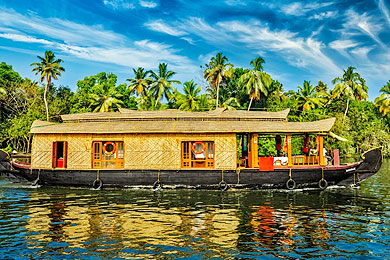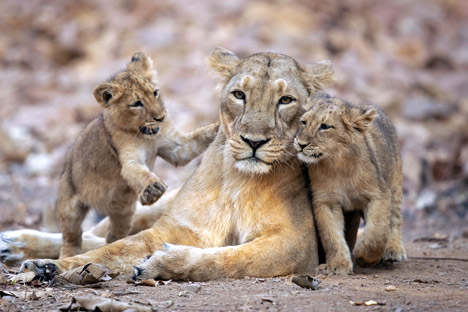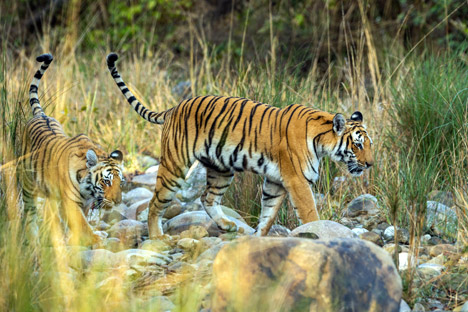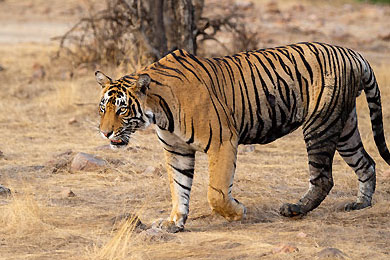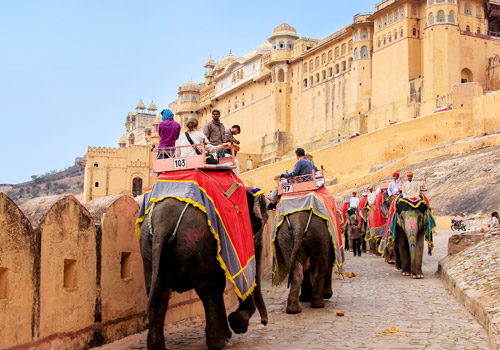History of Kaziranga National Park
Kaziranga National Park history takes us to 1904 when the Viceroy of India, Lord Curzon, and Mary Curzon (his wife) went on a trip to the region. Unfortunately, they did not get sight of a rhino, which led Mary Curzon to convince her husband to take a step to protect the one-horned rhinoceros. Consequently, in 1905, this region’s 232 sq km area was declared a reserved forest.
After three years, an area of 152 sq km was combined with this reserved forest area. Then, in 1916, the wildlife region was redesignated as Kaziranga Game Sanctuary. And finally, in 1950, it got the title Kaziranga Wildlife Sanctuary. Later, the state government passed the Assam National Park Act in 1968 and declared it a national park. However, UNESCO has included this park as a World Heritage Site as it has a unique natural environment and rich biodiversity.
Flora and Fauna in Kaziranga National Park
Kaziranga is famous for having a great variety of wild animals, birds, and reptiles, which includes many threatened species. Apart from the great one-horned Indian Rhino and a large population of Indian Elephants, the park also shelters numerous wildlife attractions. Kaziranga National Park animal species are significant aspects that attract tourists worldwide. The 479 species of migratory and resident birds also add to the majesty of Kaziranga’s rich biodiversity and ecosystem. You can spot several species, like fishing cats, leopards, jungle cats, small Indian mongooses, and gray mongooses while admiring the natural beauty of diverse flora. The famous trees in this national park are kumbhi, Indian gooseberry, cotton tree, and elephant apple. Do not forget to admire its aquatic flora while exploring Kaziranga National Park, Assam.
Places to Visit Near Kaziranga, National Park
Undoubtedly, Kaziranga has become a synonym for exotic wildlife and wilderness, but it also has no shortage of amazing nearby places that’ll add to your list of cherishable memories on the trip. Below are some of the beautiful places near Kaziranga National Park to make your holiday more memorable.
Addabarie Tea Estate
It is a unique green heaven for nature lovers that spreads over 22 acres near Tezpur. The tea garden will uplift your travel experience through its extensive greenery.
Kakochang Waterfalls
With stunning coffee and rubber plantations in the background, Kakochang Waterfall is one of the best places to unwind yourself in natural bliss. You need to trek only 4 km from Bokahat to reach the waterfall.
Guwahati
Be ready to feel the vibe of northeast India by visiting the city of Temple-Guwahati. It is one of the must-visit tourist destinations near Kaziranga National Park to delve into spirituality, culture, and vibrant fairs.
Agnigarh
Agnigarh is one such tourist place near Kaziranga that has now developed into a park. You can enjoy stunning Brahmaputra River and Tezpur views from this place.
Bamuni Hills
The ruins of Bamuni Hills near Kaziranga are highly recommended for history lovers. Sculptural ruins and stone carvings still echo the supremacy of ancient artists.
Safari in Kaziranga National Park
Kaziranga National Park is a natural gift to humanity that delivers fantastic experiences in the wild and becomes a part of long-term memory. There are many birds, animals, and greenery there. A safari is one of the primary tourist attractions and activities in the Kaziranga National Park. In Kaziranga, one can go on an elephant safari, jeep safari, boating tour, and walking safari to discover the wildlife’s richness.
Jeep Safari
You will go through one of India’s most varied biological reserves, the Kaziranga National Park in Assam, in an all-terrain 4-wheel drive. The Indian Army favors the Maruti Gypsy because of its well-known ability to traverse even the most challenging terrains. The park’s interior has no pitch roads to protect the flora and fauna’s habitat. Therefore, a gypsy ride will guarantee an uninterrupted journey through Kaziranga National Park.
When you see the majestic one-horned rhino at Kaziranga, you can choose to stand on your toes on this ride, available at Bagori, Kohora, and Agaratoli across the three park ranges.
Jeep safaris in Kaziranga National Park on specific tourist routes chosen by the forest administration. Currently, the Kaziranga Jeep Safari covers the following areas:
- Kohora Central Range
- Western Range in Bagori, Bagori
- Eastern Range at Agaratoli, Agaratoli
- Range of Burapahar in Ghorakati
Jeep safari Timings
- Morning- 07:00 AM – 10:00 AM
- Evening- 01:00 PM -4:00 PM
Elephant Safari
The most exciting safari option in Kaziranga National Park is the “Ride of the Kings” Elephant Safari since you may see a variety of flora and fauna up close with this option. The best time to see animal species in Kaziranga National Park is early morning, when the Elephant Safari begins at 4.30 AM.
If one of the Big Four (4) cat species is spotted at Kaziranga, it won’t matter much to you since you are sitting next to the King of the Animal Kingdom. However, if you choose this safari option, you can see the majestic one-horned rhino species in Kaziranga National Park.
Elephant Safari Timings
- Morning: 05:30 AM – 06:30 AM
- Morning: 06:30 AM – 07:30 AM
- Afternoon: 3:00 PM – 04:00 PM
Boat Safari
A boat safari in Kaziranga with numerous sightings of freshwater dolphins through the Dhansari and Brahmaputra River confluence. Through this safari, you can spot animals like elephants, wild buffalo, tigers, antelope, deer, and rhinos. A boat safari excursion lasting two to three hours would be exciting given the likelihood of seeing this many animals. Relax in the plush couches built into the boat tenders as you watch the boats plow through the rivers’ crystal-clear waters, bringing back memories and photos of a unique natural history event.
A boat safari excursion lasting two to three hours would be exciting given the likelihood of seeing this many animals. Relax in the plush couches built into the boat tenders as you watch the boats plow through the rivers’ crystal-clear waters, bringing back memories and photos of a unique natural history event.
Boat Safari Timings
Generally, the park’s visiting hours are from 7:30 AM to 4:00 PM. However, boat safaris might have specific time slots within these hours.
Kaziranga National Park Walking Safari
The primary objective of the fascinating Kaziranga walking safari is for tourists to go on leisurely, guided walks to discover diverse wildlife species in the wilderness. A nature trail is a tourist-accessible, escorted walking safari. It must be done at the entrance gate ticket counter with the appropriate payment and original ID information because there is no option for booking.
Kaziranga National Park Zones and Gates
The four tourism zones that make up the Kaziranga National Park are the Central Zone (kohora), the Western Zone (Bagori Zone), the Eastern Zone (Agaratoli) and the Burapahar Zone (Ghorakati). While the Elephant Safari is exclusively arranged in the Central and Western zones, the Jeep Safari is organized in every zone.
Zones of Kaziranga National Park
Central Safari Zone in Kaziranga
The entrance to Kaziranga Park’s center area lies in the little village of Kohora, about two kilometers from the bus stop on the National Highway. The Mihimukh riding tower also called the Elephant Safari Point, marks the beginning of the central zone. Visitors who have reserved an Elephant Safari from this location will ride an elephant for an hour around the park’s center. This zone hosts both the Jeep Safari and the Elephant Safari, and visitors can participate in either safari by getting a permit from the central zone’s tourism office.
Mihimukh in the Central Range near Kohora is home to many animals and plants and a beautiful topography. It is situated along the southern banks of the Brahmaputra River. This region is known for its spectacular sightings of grazing rhinos, elephants, and many other types of wild animals.
Western Safari Zone, Bagori Kaziranga
The Kaziranga location, known as Bagori, is where you’ll find the park’s western section entrance. From the beginning of this zone, you see the Bagori Tourism Office, where visitors can board an Elephant Safari or a Jeep Safari to explore the jungle. The western zone of Kaziranga is the most popular tourist area for elephant safaris since its landscape makes it possible to see one-horned rhinos up close. The Monabeel, Bimoli, and Kanchanjuri regions are included in the Western Range of Kaziranga, which enters Bagori. This region is the best place to witness one-horned rhinos and water buffaloes. In addition, an hour-long elephant safari is offered during the season (Nov to April).
Eastern Safari Zone, Agoratoli Kaziranga
The little village of Agaratoli, situated on the National Highway, is home to the entry gate for Kaziranga Park’s eastern zone. This zone’s starting point is the Agaratoli Tourism Office, and a jeep safari is run here. In the park, the east zone also provides boat safaris, which are a fantastic way to observe the wildlife near the park’s water features. Binoculars work excellently to see the many exotic aquatic birds living in the Eastern Zone.
Burapahar Safari Zone Kaziranga
The village of Ghorakati is home to the Burapahar Zone’s entrance to Kaziranga Park. The jeep safari in this region begins at Rhineland Park. The Burapahar Tourism Zone is known for its mountainous topography, stunning natural environment, and top-notch birding opportunities.
The area also provides guided forest treks along a predetermined route, which may be an educational experience if you want to get up close and personal with nature while also exploring a dense forest. Their respective offices control the four tourism zones above, and the office counter is where you can pick up Jeep Safari and elephant safari permits.
Gates of Kaziranga National Park
The park’s main entrance is located at Kohora on National Highway 37, where there is a tourist complex and booking offices. Guwahati and Jorhat have airports that are connected with all across India and can be accessed from Kolkata.
Resorts in and around Kaziranga National Park
Numerous lodging options, from budget-friendly to luxurious, are offered in and around Kaziranga National Park to accommodate visitors. Some of the best accommodations in Kaziranga National Park are;
- Diphlu River Lodge
- Iora
- Nil Tava
- Infinity Resort
- Resort Borgos
- Nature Hunt Resort
- Jonaki kareng
- Wild Grass
